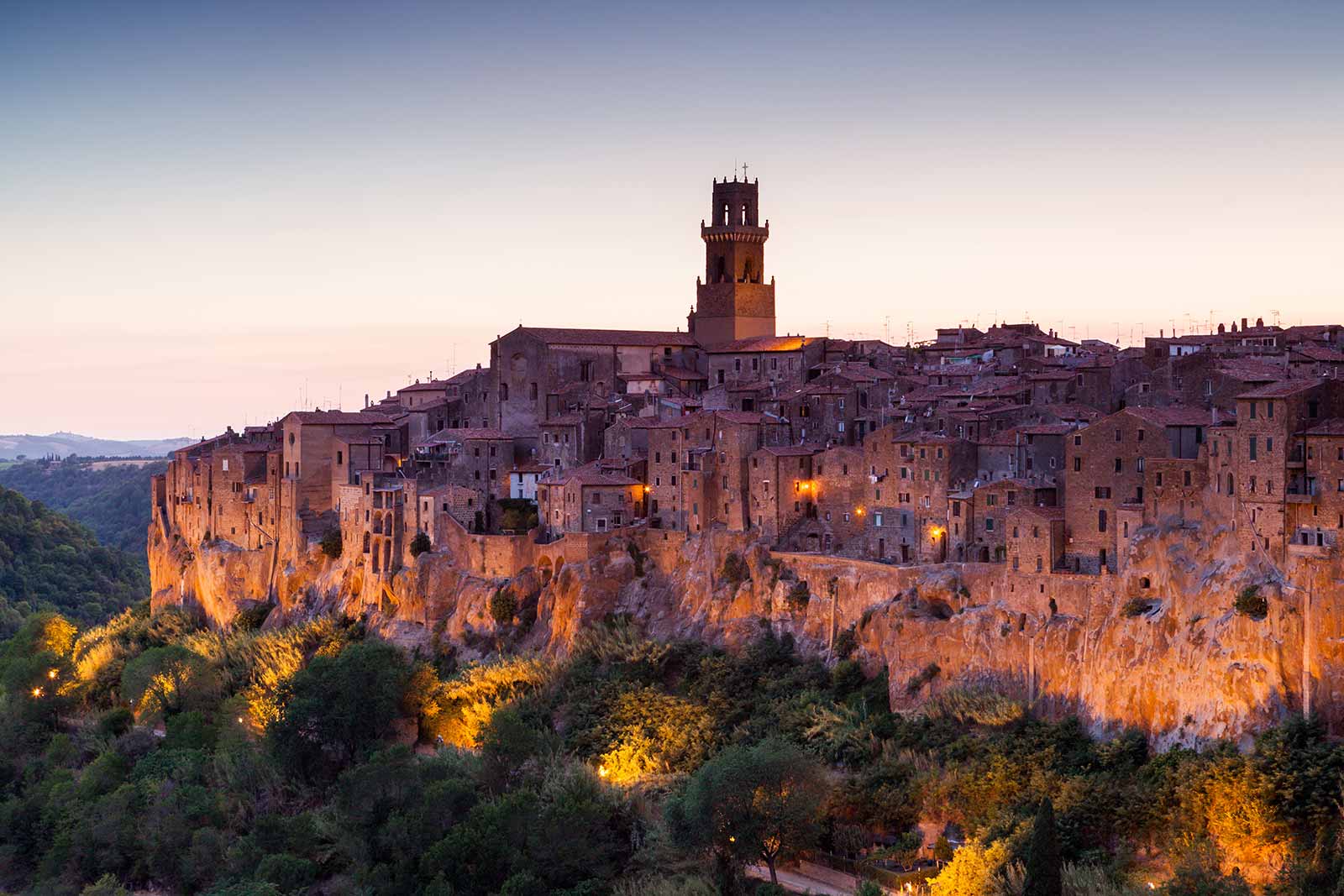Pitigliano, Sorano and Sovana and the beautiful sights of medieval Maremma
The picturesque village of Pitigliano lies in the heart of Maremma, on a tuff rock spur dominating deep valleys with abundant vegetation, typical of Tuscany.
Together with Sovana and Sorano, it is one of the three “tuff towns”.With its narrow streets and alleys, it is a fine example of a medieval town, where curiosities and traces of past eras are hidden around every corner.
In the valley that surrounds it, the Etruscans opened up large passageways excavated inside the tuff rock: the so-called “Vie Cave”, a network of cave routes that extends around the town through which you can walk freely and is quite fascinating both from a historical and visual standpoint.
It is the specific nature of the ground on which Pitigliano is built that has made it a town characterised by private cellars that have been dug out underground. Tuff is, in fact, a soft volcanic rock that is easy to work and shape. This has allowed the people who live here to dig places in which to store food, wine and oil, away from the surface heat of summer days.
The town is rich in history and culture and was nicknamed “Little Jerusalem” because it had been home to Jewish families fleeing their homelands since the 16th century. Coexistence between the new Jewish community and the people of Pitigliano was so peaceful that the first Jewish places of worship, such as the Synagogue of 1598, were built here from the very beginning.
From its high position, the town overlooks an amazing landscape of fields cultivated with olive trees and vines. The latter in particular is key to the production of “Bianco di Pitigliano” DOC, one of the first DOC wines in Italy (1966), that was somewhat undervalued for many years, but is now alive and well thanks to the area’s wine growers.
What to do in Pitigliano
Lovers of small medieval towns definitely need to make a detour to visit Pitigliano. A holder of the Italian Touring Club Orange Flag, most of the sites of historical and cultural interest are concentrated in the old part of the town.
- VISITING THE GHETTO
What is known as the “ghetto” is laid out around one street, Via Zuccarelli, which starts in Piazza della Repubblica and ends in Via Aldebrandeschi, where the Capisotto district begins. Built from the second half of the 16th century, after the arrival of the Jewish community in Pitigliano, the Ghetto was the centre of Jewish community life in the Tuscan town. The Synagogue, ritual bathhouse, unleavened bread oven, kosher butcher’s shop and the wine cellar were built in the decades following the arrival of the Jewish community in Pitigliano, towards the end of the 16th century.
- THE VIE CAVE
In the surrounding countryside, there is a dense network of passageways, tunnels and caves, “cut” into the heart of the tuff rock. These are the Vie Cave (cave routes), dug out by hand by the Etruscans as connecting roads.The route of these semi-subterranean routes covers the area around the old town and stretches for a total of several kilometres, but is divided into sections that can be walked along individually.
- THE WINE
Pitigliano lies at the heart of the controlled designation of origin (DOC) from which its white wine takes its name, made principally from Trebbiano Toscano grapes and the rest from varieties such as Greco, Grechetto, Sauvignon, Viognier and Chardonnay. The Bianco di Pitigliano DOC includes various types of wine, such as the basic Bianco di Pitigliano (still or dry), the Spumante, the one with the Superior mention and the Vin Santo dessert wine.
Visiting Sovana
Sovana lies about seven kilometres from Pitigliano and was elected one of Italy’s most beautiful towns.
It has preserved its medieval layout, with the ruins of the imposing Rocca Aldobrandesca dating back to the 11th century. If you walk all the way along Via del Pretorio, the only access road to the town until 1558, you end up in Piazza del Pretorio and in front of it the Palazzo dell’Archivio, built in the 12th century, with its bell gable and Clock Tower.
On the right-hand side of the square is the Palazzo Pretorio, a 13th-century building with numerous coats of arms on its façade, referring to the Sienese local administrators (capitani del popolo) and commissioners who governed Sovana between the 15th and 17th centuries. On the left is the church of Santa Maria dating back to the late Romanesque period (12th-13th century); to the side, the Palazzo Bourbon Del Monte, which belonged to the nobles of the same name, with a rustic façade and a large portico bordering the outside walls of San Mamiliano, the oldest church in the city.
As you leave the square, you head along via di Mezzo towards the Duomo. You will come across the house of Ildebrando di Soana on this street who became Pope in 1073 with the name of Gregory VII; a little further on is the Duomo di Sovana, one of the most important Romanesque-Gothic buildings in all of Tuscany.
Visiting Sorano
Completing the trio of tuff towns is Sorano, a great place to “lose yourself” in its narrow, winding alleys and lanes, carved out among the houses made of tuff and historic buildings in greyish-yellow stone with eye-catching architecture spanning several generations of builders.
Sorano is a historic town dating back to Etruscan times, which changed hands quite frequently, largely due to its strategic location. In 1417, it became part of the Republic of Siena; in 1556 it gained complete autonomy only to be later annexed to the Duchy of Tuscany and eventually become part of the Kingdom of Italy in 1860.
There are two gates that were historically used as the entrance to the city: the Porta di Sopra and the Porta di Sotto, both of which are spectacular. The first is located under the Orsini Fortress and leads to the heart of the town, while the second is near the Masso Leopoldino and still bears the town’s coat of arms.
The latter is a fortified panoramic terrace, commissioned by the Grand Duke Leopold, which was constructed before the Orsini Fortress and was an integral part of Sorano’s defensive system, together with its walls.
A Jewish community lived in Sorano, as in Pitigliano, for several centuries, so there is evidence of the ghetto here too and the Synagogue, probably dating back to the end of the 16th century, is located in Via Selvi and was recently renovated.








